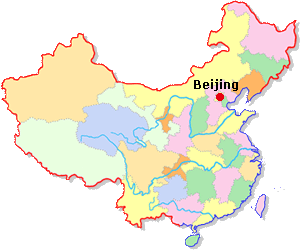
 Beijing, the capital of the People's Republic of China, it is not only the nation's political center, but also a cultural, scientific and educational heart as well as a key transportation hub. Beijing has served as a capital of the country for more than 800 years.
Beijing, the capital of the People's Republic of China, it is not only the nation's political center, but also a cultural, scientific and educational heart as well as a key transportation hub. Beijing has served as a capital of the country for more than 800 years.
Why travel in Beijing
Be sure to have your camera prepared for a good workout; you could easily spend a month discovering Beijing's fascinating sights, sounds and tastes without losing the excitement of your first day.
You'll be guided to the heart of Beijing's historical centre, where lies the Forbidden City, the enormous palace compound that was the home of the emperors of the Ming and Qing dynasties; the Forbidden City also hosts the Palace Museum, which contains imperial collections of Chinese art. From Tiananmen Square, which is located right across from the Forbidden City, you'll have the choice to visit several notable sites, such as the Tiananmen, Qianmen, the Great Hall of the People, National Museum of China, Monument to the People's Heroes, and Mausoleum of Mao Zedong.
The Summer Palace and the Old Summer Palace both lie at the western part of the urban city of Beijing; the Summer Palace, a UNESCO World Heritage Site, displays a comprehensive collection of dream-perfect imperial gardens and beautiful palaces that functioned as the summer retreat for the Qing Dynasty emperors. Among the best known religious sites in the city is the Temple of Heaven ( Tiantan ), located in southeastern Beijing, also a UNESCO World Heritage Site, where emperors of the Ming and Qing dynasties made visits for annual ceremonies of prayer to Heaven for good harvest. Beijing has a wealth of picturesque pagodas, temples, palaces, bridges, gardens, monuments, parks and people that will thrill any traveller.
The common people and the public servants, artists, soldiers and merchants left their historical signature too. Their courtyard houses (siheyuans) line hutongs, or alleys, which connect the interior of Beijing 's old city. The hutongs are usually straight and run east to west so that doorways can face north and south for Feng Shui reasons. They vary in width - some are very narrow, enough for only a few pedestrians to pass through at a time. Once ubiquitous in Beijing, siheyuans and hutongs are now rapidly disappearing, as entire city blocks of hutongs have been leveled and replaced with high-rise buildings. The realisation that history also lay outside the Imperial edifices prompted a policy change whereby some particularly historic or picturesque neighbourhoods of hutongs were preserved and restored by the government, especially for the 2008 Olympics.
And not to forget, tastes; Mandarin cuisine is the local style of cooking in Beijing. Peking Duck is perhaps the most well-known dish. The Manhan Quanxi ("Manchu-Han Chinese full banquet") is a rare traditional banquet originally intended for the ethnic-Manchu emperors of the Qing Dynasty; it remains very prestigious and expensive. For the proletarian budget, the Fuling Jiabing is a traditional Beijing snack food, a pancake (bing ) resembling a flat disk with filling. Beijing is well-served with fine restaurants offering delicious menus from all parts of China . There is also a large variety of delicious street-food available from stalls and in the night-markets, though there are also dishes featuring animal parts and deep-fried insects that might not appeal to some squeamish Western diners. Teahouses are common in Beijing. Chinese tea comes in many varieties and some rather expensive types of Chinese tea are said to cure an ailing body extraordinarily well.
Basic Information about Beijing
Area Code: 010
Zip Code: 100000
Area: Beijing has an area of 16,808 square kilometers.
Geography: Beijing is located on the western coast of China on the Pacific Ocean and stands at the northern tip of the North China Plain. Tian'anmen Square in the center of Beijing is situated at 39°56' North Latitude and 116°20' East Longitude. Beijing lies at approximately the same latitude as Philadelphia in the U.S. and Madrid in Spain. The city is 39% flat land and the other 61% is quite mountainous area. Beijing is surrounded by the Yanshan Mountains on the west, north and east while the small alluvial plain of the Yongding River lies to its southeast. Beijing faces the Bohai Sea, and the area is also called the Beijing Bay.
Population: The permanent residents of Beijing come from all of China's 56 ethnic groups. The Han nationality accounts for 96.5% of the total. The other 55 ethnic minorities claim a population of more than 300,000, most of them are from Hui, Manchu, and Mongolian nationalities.
Climate: The climate in Beijing is of the continental type, with cold and dry winters, due to the Siberian air masses that move southward across the Mongolian Plateau. Summers are hot owing to warm and humid monsoon winds from the southeast bringing Beijing most of its annual precipitation. January is the coldest month and July is the warmest. Winter usually begins towards the end of October. The summer months, June to August, are wet and hot with about 40% of the annual precipitation.